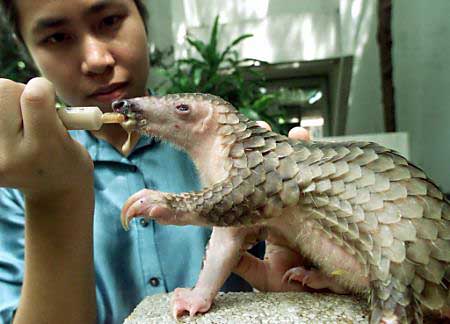Just the facts #4
Recently I was asked
Why are trees tall?
The simple answer to the question is
Because other trees are tall
but I think this deserves some qualification.
Most people are familiar with the theory of evolution by natural selection, in which the individuals most suited to their environment successfully produce more offspring than less suited individuals. The concept is most commonly reduced to a truism "Survival of the fittest", and is just as commonly misunderstood.
Many people have the idea that fitness means the strongest, fastest or largest individuals will be favoured in selection. This is obviously not the case, as there are far more species smaller than a tennis ball than larger. In fact, there are vastly more species of life on earth smaller than the eye can register than those we humans can view. So clearly bigger is not necessarily better when it comes to natural selection. Except when it is.
The fiercest competition for survival is not between species, for example the rabbit and the fox, or the antelope and the lion, but within species. Because each individual of a particular species is competing directly with every other member of their population for all resources: food, shelter, territory, mating partners, etc; the competition is far more direct and consequential than the occasional dodging of a potential predator.
This brings us back to the tall trees. In certain forest systems, trees tend to be taller, and with fewer low branches than where trees are spaced further apart by natural means (for example water availability) . The trees which germinate and grow tall the fastest are favoured, and contribute to the failure of their immediate competitors by blocking essential sunlight to slower growing trees of the same species.
This fast growth is influenced by environmental factors, such as rainfall, and physiological factors, such as the natural etiolation (or elongation, a process separate to actual growth) of stems in shade. But it is fundamentally coded for in the genes of the tree species. So, even when grown outside the forest, forest trees retain some of the height of their counterparts in natural environments. The genetic information of the species is known as the genotype,, and this, in combination with environmental factors, goes on to produce the final shape of the individual, referred to as the phenotype.
Growing species outside their natural environment does not always result in similar looking specimens, however. A famous example is the Lesser Flamingo (Phoenicopterus minor), the common, pink wading bird from the Rift Valley in Africa. In its natural environment, the bird feeds on a kind of algae or cyanobacteria which are metabolised by the birds, and give them their distinctive colour. removal of the natural food source of the bird results in their feathers fading to white over time. The genotype of the bird allows for their pink plumage, but the phenotype is influenced directly by environmental factors.
Why are trees tall?
The simple answer to the question is
Because other trees are tall
but I think this deserves some qualification.
Most people are familiar with the theory of evolution by natural selection, in which the individuals most suited to their environment successfully produce more offspring than less suited individuals. The concept is most commonly reduced to a truism "Survival of the fittest", and is just as commonly misunderstood.
Many people have the idea that fitness means the strongest, fastest or largest individuals will be favoured in selection. This is obviously not the case, as there are far more species smaller than a tennis ball than larger. In fact, there are vastly more species of life on earth smaller than the eye can register than those we humans can view. So clearly bigger is not necessarily better when it comes to natural selection. Except when it is.
The fiercest competition for survival is not between species, for example the rabbit and the fox, or the antelope and the lion, but within species. Because each individual of a particular species is competing directly with every other member of their population for all resources: food, shelter, territory, mating partners, etc; the competition is far more direct and consequential than the occasional dodging of a potential predator.
This brings us back to the tall trees. In certain forest systems, trees tend to be taller, and with fewer low branches than where trees are spaced further apart by natural means (for example water availability) . The trees which germinate and grow tall the fastest are favoured, and contribute to the failure of their immediate competitors by blocking essential sunlight to slower growing trees of the same species.
This fast growth is influenced by environmental factors, such as rainfall, and physiological factors, such as the natural etiolation (or elongation, a process separate to actual growth) of stems in shade. But it is fundamentally coded for in the genes of the tree species. So, even when grown outside the forest, forest trees retain some of the height of their counterparts in natural environments. The genetic information of the species is known as the genotype,, and this, in combination with environmental factors, goes on to produce the final shape of the individual, referred to as the phenotype.
Growing species outside their natural environment does not always result in similar looking specimens, however. A famous example is the Lesser Flamingo (Phoenicopterus minor), the common, pink wading bird from the Rift Valley in Africa. In its natural environment, the bird feeds on a kind of algae or cyanobacteria which are metabolised by the birds, and give them their distinctive colour. removal of the natural food source of the bird results in their feathers fading to white over time. The genotype of the bird allows for their pink plumage, but the phenotype is influenced directly by environmental factors.
Labels: australian native trees, evolution, genotype, intra-specific competition, Natural Selection, phenotype

